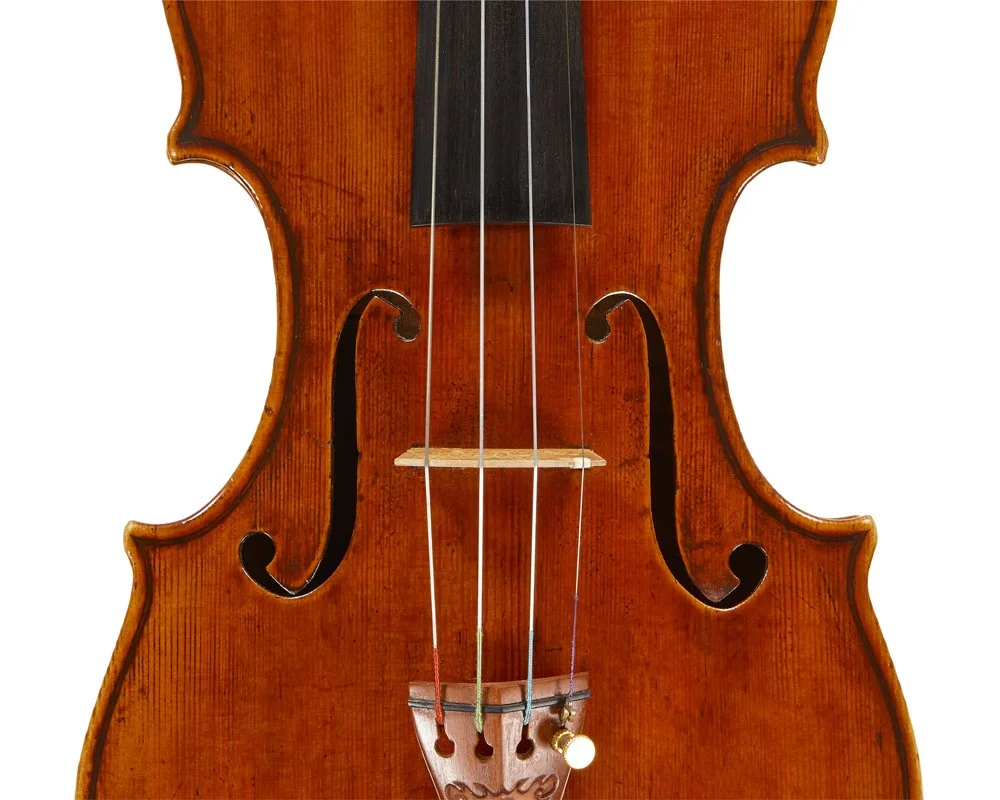Part 1: Rethinking Antiquing in Contemporary Violin Making
Bench Copy by Gregg T. Alf
This essay marks the beginning of Bench Copy — a new series by Gregg T. Alf that reflects on five decades of violin making. These writings explore the models that shaped his craft, the questions players continue to ask, and the evolving language of contemporary violin making. The title is both a tribute and a gentle irony. Bench copies played a central role in Gregg’s early career, offering a deep connection to the instruments of the past. This series begins there — not just to revisit history, but to share what a lifetime at the bench has revealed about sound, artistry, and the instruments still to come.
Part 1: Antiquing in Contemporary Violin Making
Secretly, every string player would love to play a Stradivari violin. Strads have become more than instruments; they’re cultural icons — names that appear on perfume bottles and jeans, shorthand for excellence. For a musician who has devoted their entire life to mastering their art, owning or even holding such an instrument is a dream, the tangible embodiment of everything they’ve worked for.
And so when a player steps on stage with an antiqued violin — an instrument that looks as though it’s been loved for centuries — something psychological happens. Before a single note is played, the eyes hear first. The visual language of age creates confidence, connection, and a sense of continuity with the greats who came before.
For the violin maker, the draw is just as powerful. To create a copy of a Stradivari violin is to walk for a time in his shoes — to hold his outline, to study his wood, to shape his corners. Each pass of the brush, each worn edge is a conversation across centuries. As the pale wood darkens under varnish, you feel closer and closer to the unreachable — the illusion that you too might be capable of a Stradivari. Of course, copying the path of genius is not the same as blazing it. But to arrive at something that looks that true is deeply satisfying.
When Joseph Curtin and I founded Curtin & Alf, we were captivated by this challenge. Making a convincing antiqued replica violin was not an act of trickery; it was an act of reverence and study. We learned to read the subtle wear where a shoulder rests, the faint bloom on a varnish where a player’s arm would have brushed for decades. The more we looked, the more we saw. Every scratch told a story. Every shift in sheen or color was a record of use, touch, and time.
A good bench copy violin is never a caricature. It’s built from thousands of subtle observations layered over one another until the sum feels inevitable. Like a recording of sound, each layer — color, texture, gloss, crackle — adds to a harmony that convinces the eye. And when you reach that harmony, the violin looks as though it has lived.
Pictures: Tarisio
A good bench copy violin is never a caricature. It’s built from thousands of subtle observations layered over one another until the sum feels inevitable. Like a recording of sound, each layer — color, texture, gloss, crackle — adds to a harmony that convinces the eye. And when you reach that harmony, the violin looks as though it has lived.
But not everyone understood. Many modern violin makers saw antiquing as a concession, even a deception. To them, a violin should stand clean and new, without apology. Some even considered violin antiquing a kind of cheap trick to sell instruments. I never saw it that way. For me, it was a way of learning — of absorbing the wisdom of the masters by recreating their surfaces with devotion and precision.
Still, I began to feel the contradiction — how much time and love I poured into pretending that time had already passed. I began to wonder what it would mean to let time itself do the work.
Next in the series: Part 2 Rethinking Antiquing in Contemporary Violin Making (out November 2025)



